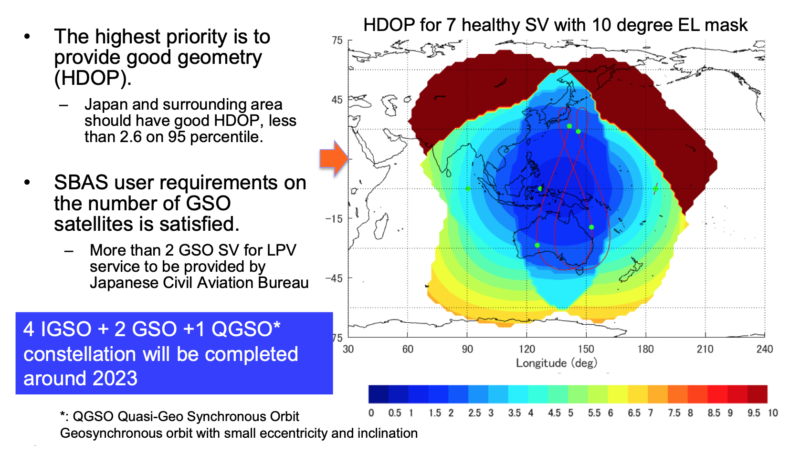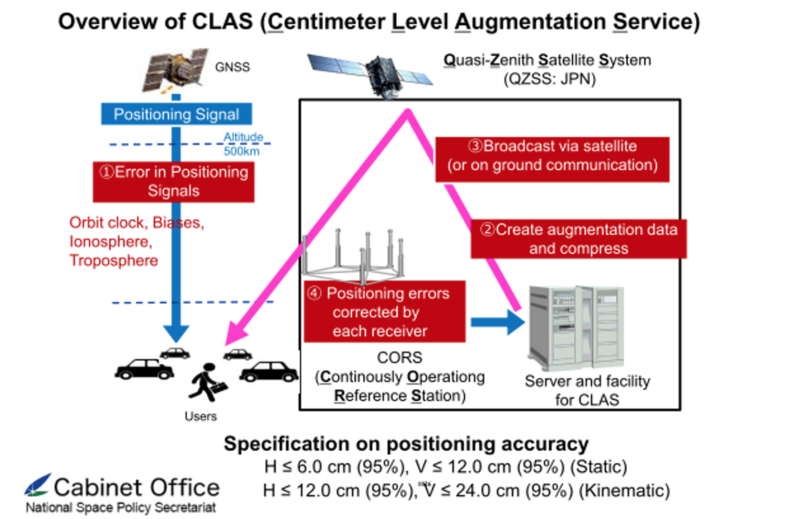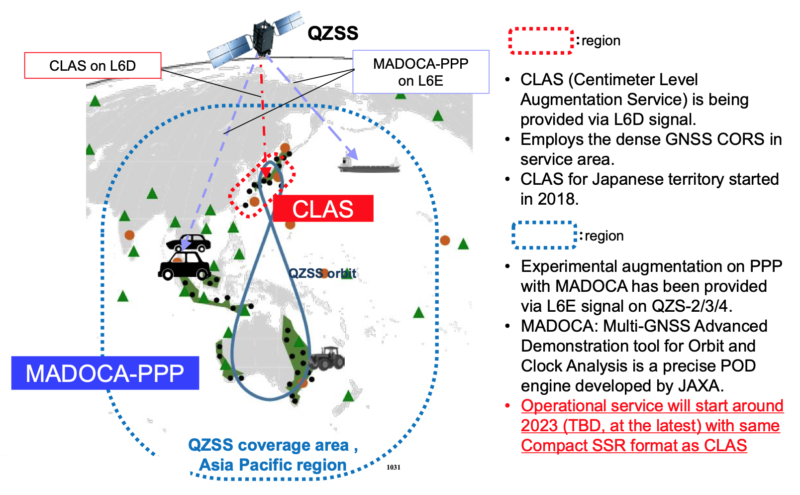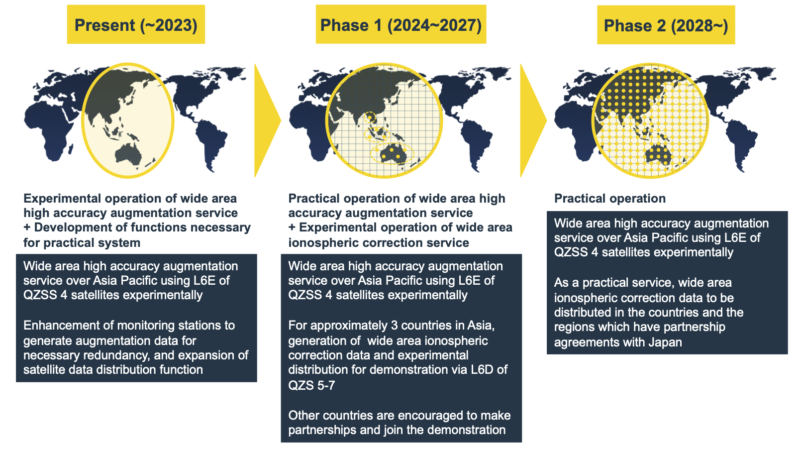Japan’s plans to expand CLAS coverage and to launch Early Warning Service overseas
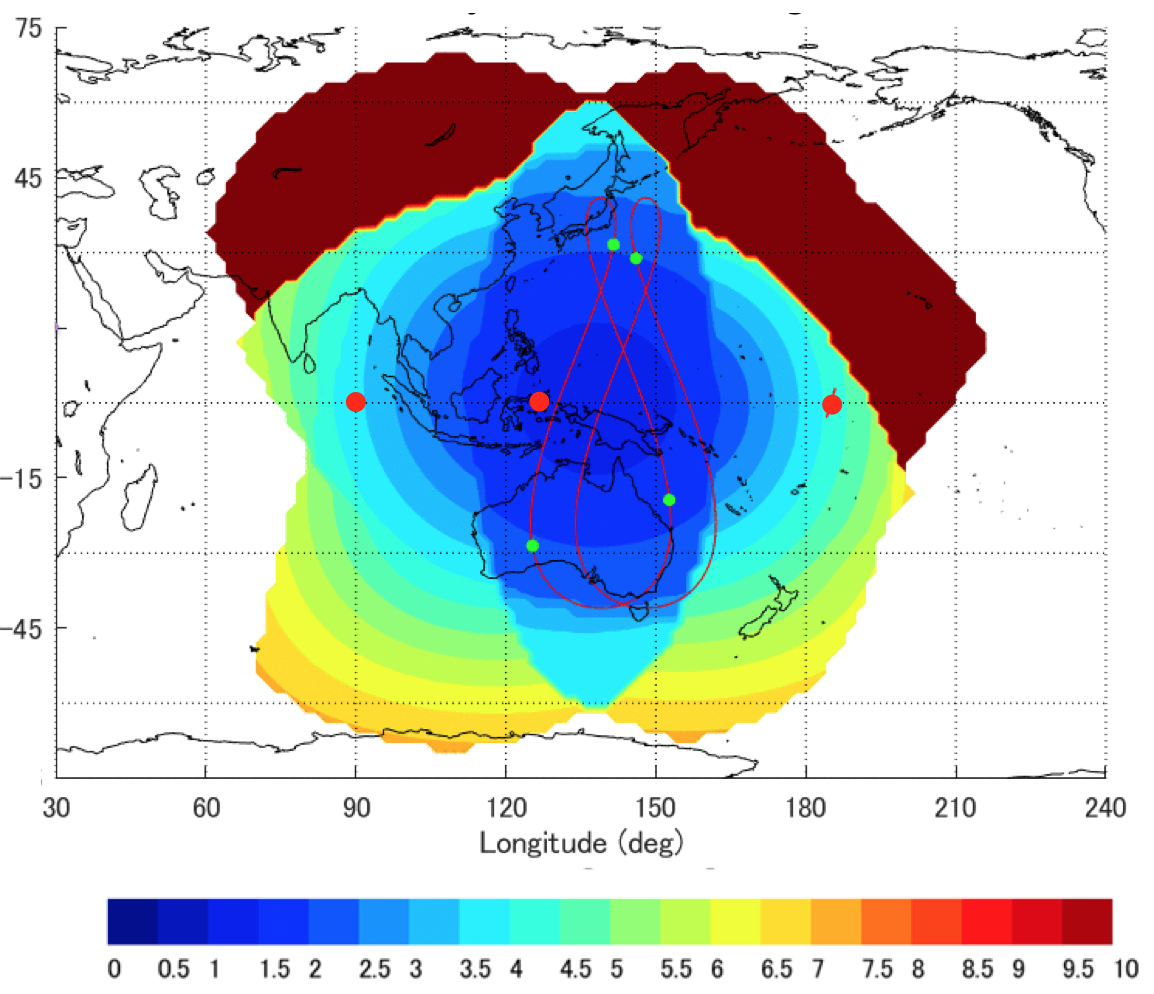

In this guest contribution, the QZSS Business Innovation Council (QBIC) is providing an overview on recent regional GNSS developments in Japan that will be advanced with this record budget.
QBIC elaborates on the plans for the expansion of Japan’s Centimeter Level Augmentation Service (CLAS) to Asia-Oceania and on the preparations to launch the Early Warning Service (EWS). With this system Japan intends to contribute to disaster prevention and relief management across the Asia-Oceania region.
Centimetre Class Accuracy Augmentation Expansion and Introduction of the Early Warning Service in the Asia-Pacific Region
The Japanese government has started preparation for the expansion of its centimetre class accuracy augmentation system into the broader Asia-Oceania region as they expand from 4 to 7 satellites (Figure 1). The Japanese Cabinet Office presented the plan at the QBIC (Quasi-Zenith Satellite System Business Innovation Council) overseas business development working group meeting held on 4 February 2021. Additionally, the green light was given to start the preparations for the launch of an EWS (Early Warning Service) providing timely information about natural hazards in the region. Three more satellites, which are to be launched until 2023, will make the service reliable over the Asia-Oceania region, whilst expanding the coverage area eastward and westward (Figure 2 & 3). Michibiki is expected to contribute greatly to the sustainable development goals (SDGs) in the region.
Satoshi Kogure, National Space Policy Secretariat Cabinet Office, Government of Japan
“Latest Status of QZSS” ION GNSS+ 2020, 23rd September 2020
Figure 2 QZSS 7 satellite constellation
Satoshi Kogure, National Space Policy Secretariat Cabinet Office, Government of Japan
“Latest Status of QZSS” ION GNSS+ 2020, 23rd September 2020
Figure 3 QZSS 7 satellite constellation coverage
CLAS Development and Future Plans
November 2018 marked the beginning of the Centimetre Level Augmentation Service (CLAS) in Japan as a domestic service (Figure 4). After just one year, CLAS has successfully penetrated B2B market segments including surveying, construction, mapping, and agriculture, each of which requires high accuracy positioning.
Satoshi Kogure, National Space Policy Secretariat Cabinet Office, Government of Japan
“Latest Status of QZSS” ION GNSS+ 2020, 23rd September 2020
Figure 4 Overview of CLAS
Since 2018, Michibiki’s CLAS service has been evaluated and tested in 6 countries across the Asia-Pacific region by providing the L6 test signal using the MADOCA (Multi-GNSS Advanced Demonstration tool for Orbit and Clock Analysis) method for high accuracy augmentation (Figure 5).
Satoshi Kogure, National Space Policy Secretariat Cabinet Office, Government of Japan
“Latest Status of QZSS” ION GNSS+ 2020, 23rd September 2020
Figure 5 Domestic and Wide Area Service of High Accuracy Service
After assessing the practical system performance, the Japanese government has decided to progress with the overseas service, with the two-phase system installations (Figure 1) to begin in 2024.
Based on the QBIC Working Group Meeting Material, 4th February 2021, Satoshi Kogure National Space Policy Secretariat Cabinet Office, Government of Japan (translated into English by SPAC from the original)
Figure 6 QZSS High Accuracy Service Development for Asia Oceania
Read more on the success of Michibiki from the QZSS Business Innovation Council.
EWS Development and Future Plans
The Japanese EWS is called Satellite Report for Disaster and Crisis Management (DC Report, in short) and has been distributed in Japan, using Michibiki L1S Signal. (https://qzss.go.jp/en/overview/services/sv08_dc-report.html) While introducing the service towards the Asia Oceania region, the following steps are initiated in parallel.
The service will be ready for 2024-2025. Consensus between countries must be made on the rules such as priority of message distribution when multi disasters happen simultaneously.
Interoperability between Galileo and Michibiki Services
Japan and the EU have been cooperating to ensure the interoperability between Galileo’s High Accuracy Service (HAS) and Michibiki’s CLAS as well as the EWS. Furthermore, ICG (International Committee on GNSS) has already taken action to start the interoperability discussion, inviting all GNSS providers to join.
Outlook
Soon, we can enjoy similar services all over the world. Starting with the EU+ region, the EU will begin implementing Galileo High Accuracy Service (HAS) from 2022, then globally from 2024 onwards, with a horizontal accuracy of 20cm. Read more on HAS here. In the EU+ region, the convergence time is to be improved after 2024. Moreover, the EU plans to provide EWS globally using Galileo Second Generation (2027〜).
Satoshi Kogure from the National Space Policy Secretariat Cabinet Office announced at the WG meeting, “I would like to invite all the companies to positively consider product development targeting QZSS overseas services”.
If you would like to connect to GNSS players in Japan, register for Industry Support. In September 2021, the EU-Japan GNSS Industry Week will take place. Stay tuned by subscribing to our newsletter.
This article is based on a previous publication by the QZSS Business Innovation Council.

